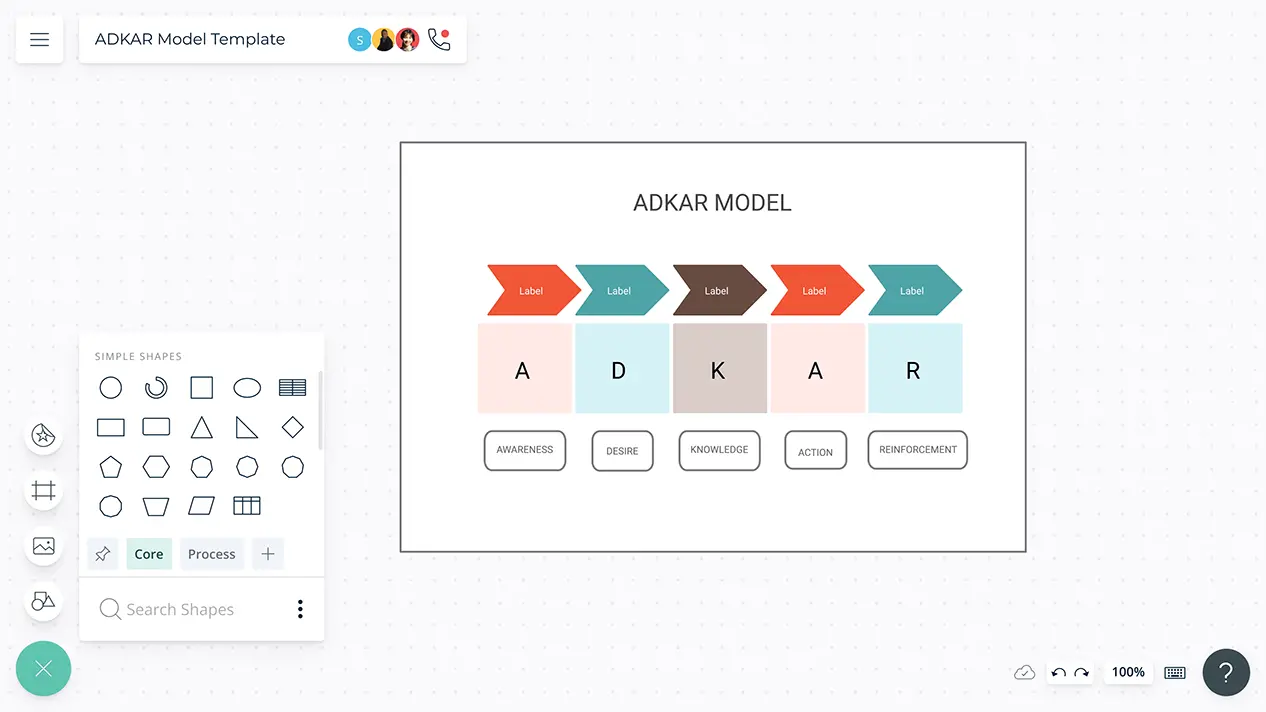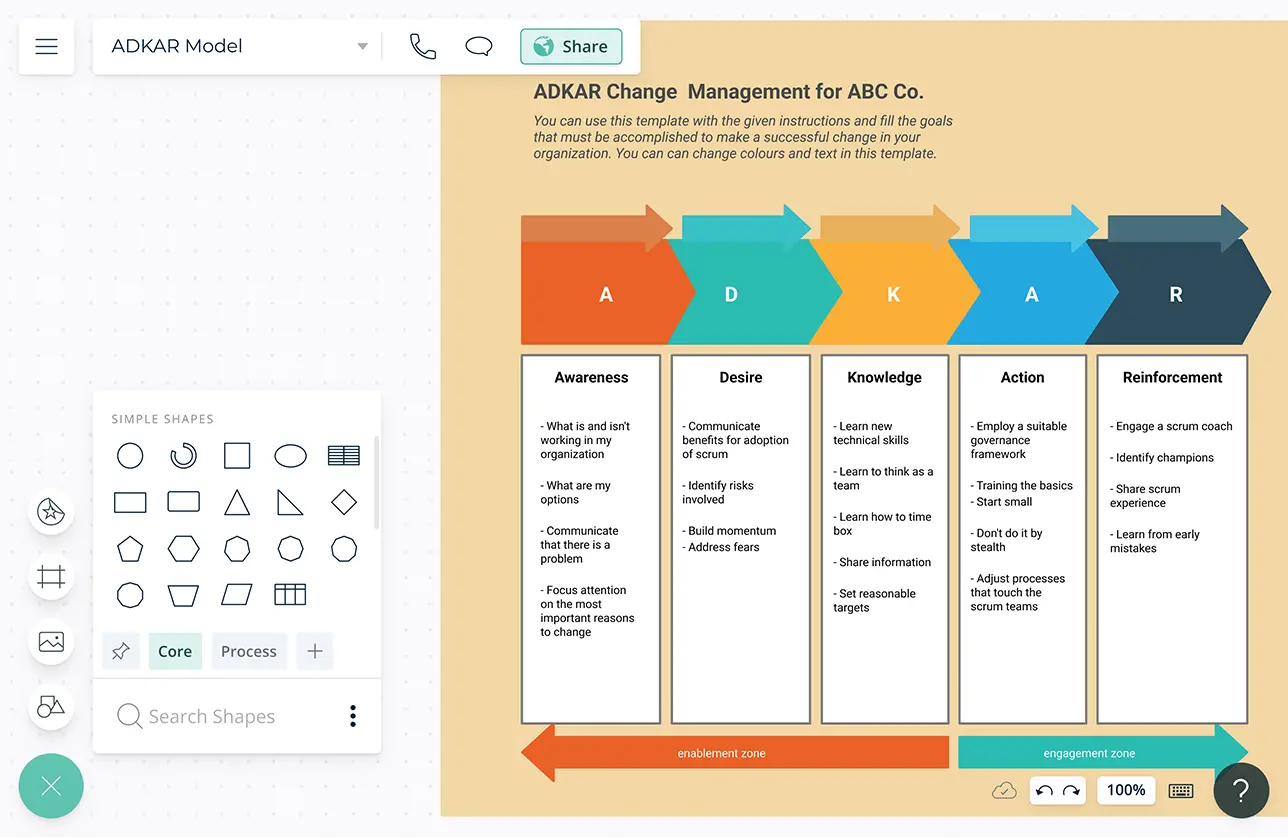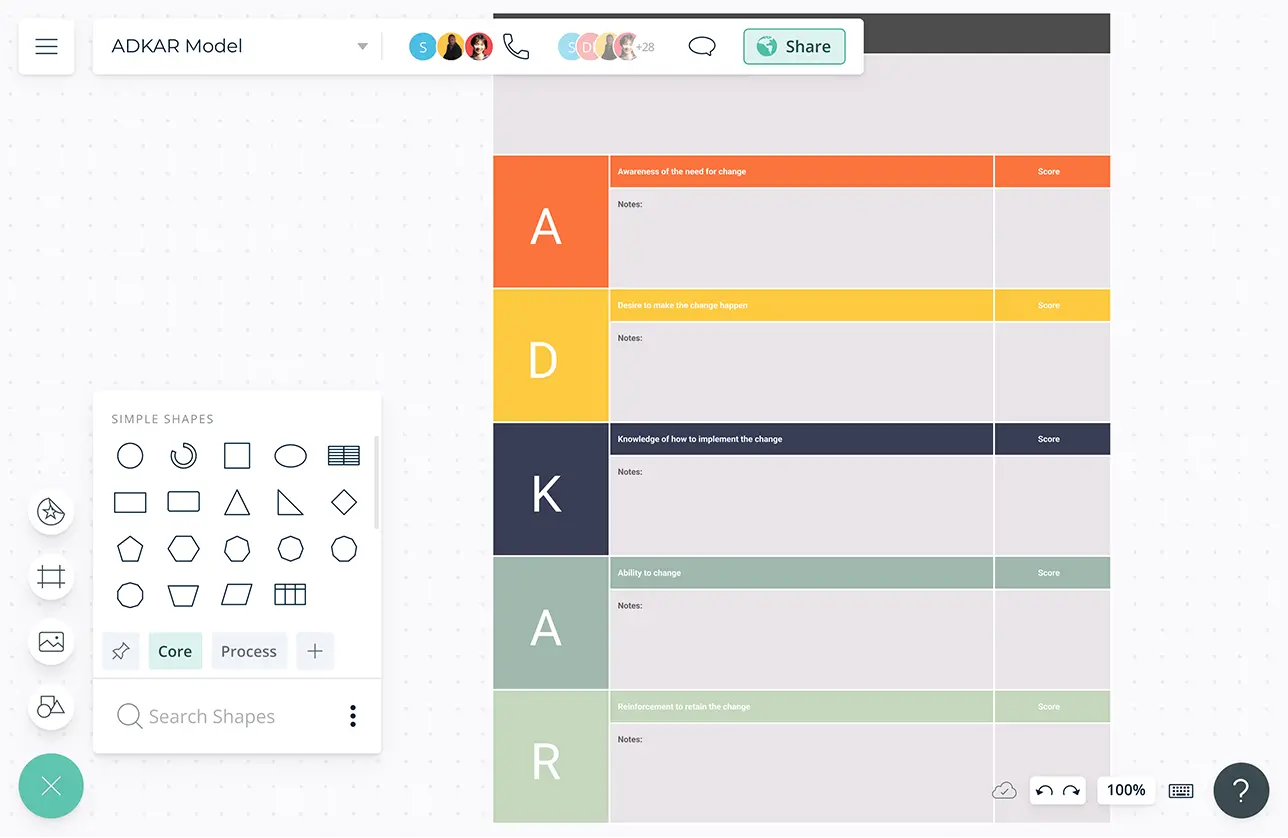ADKAR Change Management Plan Template
Build Effective Change Management Strategies
Develop effective change management strategies using the ADKAR model to help people better embrace and adopt change.
- Easy infinite visual canvas to develop and execute change initiatives
- Real-time collaboration to work together with colleagues and stakeholders
- Multiple templates and frameworks for change management planning

- Easy infinite visual canvas to develop and execute change initiatives
- Real-time collaboration to work together with colleagues and stakeholders
- Multiple templates and frameworks for change management planning


Streamline Planning for Change

Professional diagramming and brainstorming tools to ideate, plan, and strategize around organizational improvement and change initiatives.
Multiple templates and frameworks for analyzing processes, setting goals, action planning, resource allocation, strategic planning, and more.
Built-in tools to organize your plans and create interactive presentations instantly to onboard stakeholders.
Data-enabled visuals to bring data from multiple sources into a single canvas to connect information together.
Add detailed docs, attachments, links and more via the notes feature on each item to capture details and the big picture in a single space.
Keep Everyone & Everything in Sync

Real-time cursors for any number of participants. Collaborate with team members and stakeholders on a shared canvas.
Video conferencing baked into the platform to feel like you are in the same room.
Comment with context, have discussions and follow-ups on the same canvas. Async!
Full version history to keep track of key points during each iteration of your planning session. Branch out from an earlier version if needed at any time.
Multiple access and role levels to streamline sharing, reviewing, and editing strategic, communications, and change management action plans.


Successfully Lead Your Team Through Change

Generate multi-perspectives of your plans with model objects; convert action plans to roadmaps to workflows.
Multiple app integrations to help you import and export data across teams on different platforms.
Prioritization grids to visually rank action items for effort and impact, and plan and assign tasks.
Assign tasks to complete items in context. Link tasks to or from other project management tools seamlessly.
Set estimated times and due dates for tasks and allocate resources based on availability and skill sets.
What Is the ADKAR Change Model?
ADKAR is an acronym that stands for the five outcomes (Awareness, Desire, Knowledge, Ability, and Reinforcement) the individuals of an organization should achieve to successfully implement a change initiative. It was developed by the Prosci founder Jeff Hiatt after conducting research on the change patterns of over 700 organizations. The model focuses on the change of an individual in change management and addresses how to guide them through the period of change while avoiding any bottlenecks along the way.
The Five Elements of the ADKAR Change Model
- Awareness: this refers to the employee’s understanding of the nature of change, need for it, and the risks involved in not changing. Effectively communicate the rationale behind the change initiative to employees while shedding special light on how it will affect the organization as well as the individual employee.
- Desire: represents the willingness the individual shows to support and engage in the change. In this stage, consider how to motivate employees to embrace and support the change. A good way to start is by explaining how they can benefit from it.
- Knowledge: this entails the information, training, and education needed to implement the change successfully. It includes the processes, behaviors, tools, systems, skills, job roles, and strategies necessary to carry out the change initiative.
- Ability: refers to the execution of the change initiative, or in other words converting knowledge into action. It’s achieved when the employees have successfully demonstrated their capability in implementing the change initiative at the required performance levels.
- Reinforcement: represents the internal factors such as employee’s internal satisfaction or benefits received from the organization, and external factors such as recognition or reward that helps sustain the change in the long run.